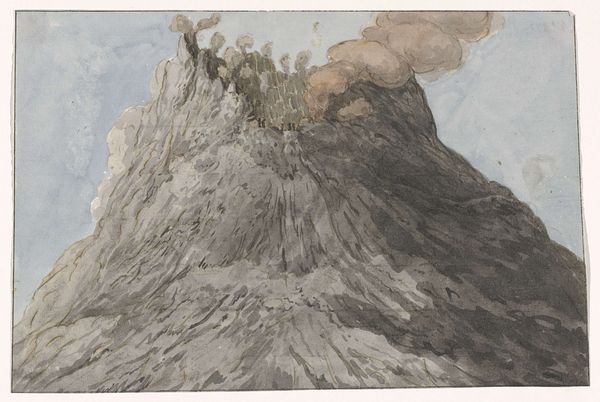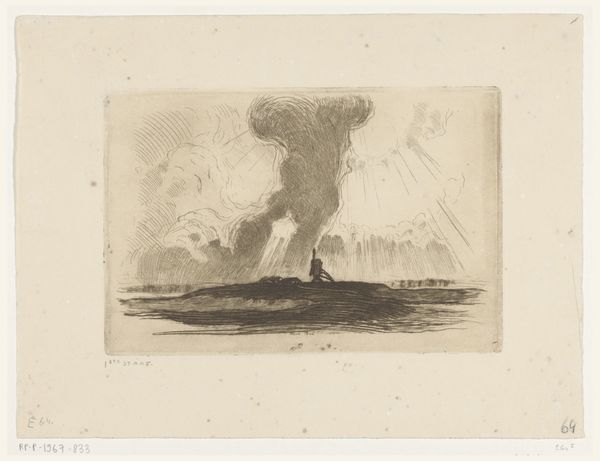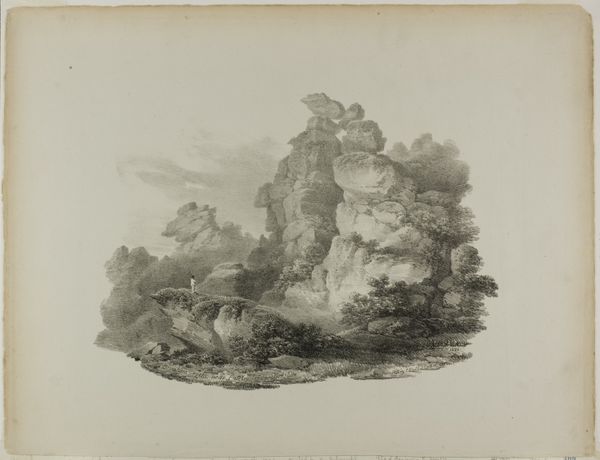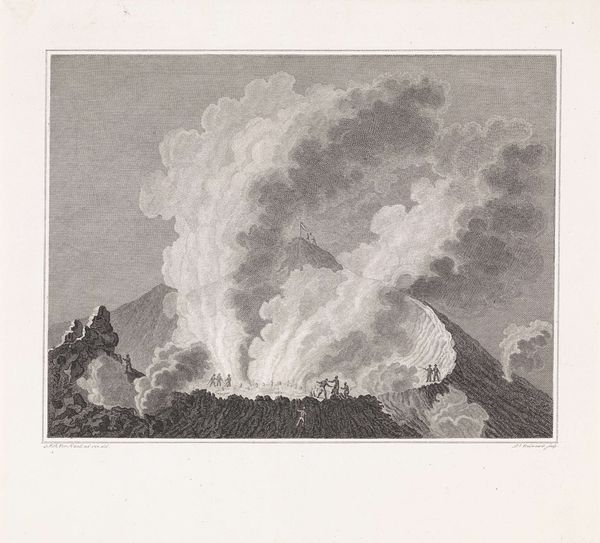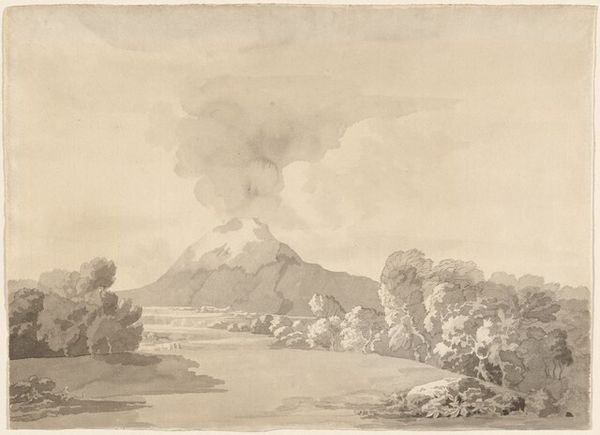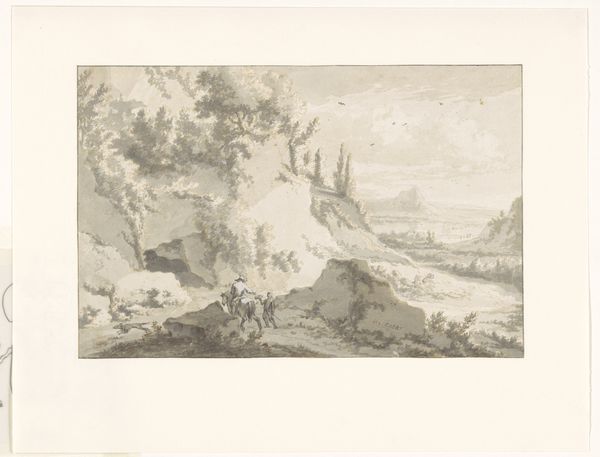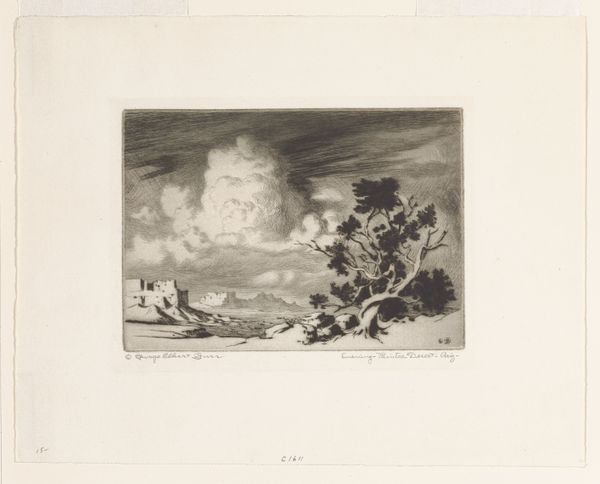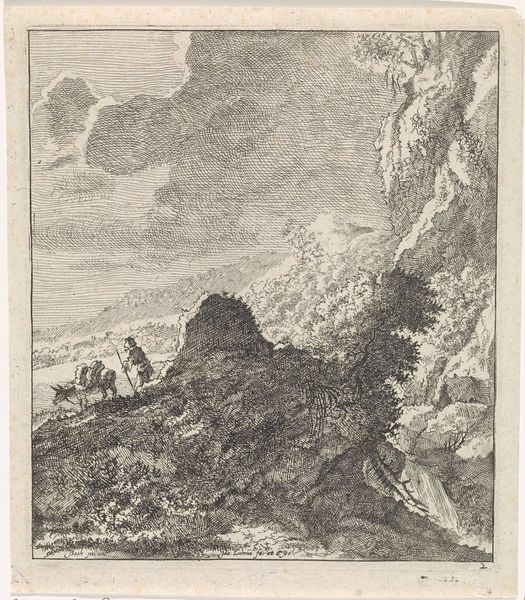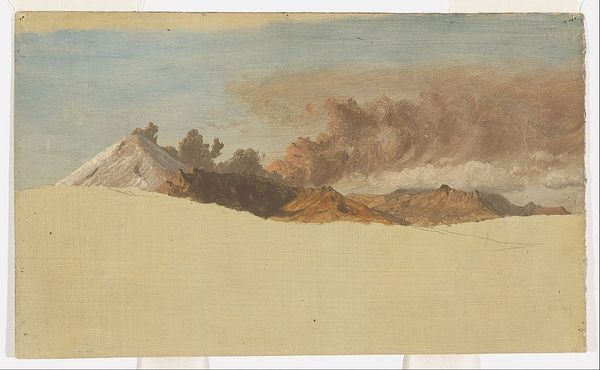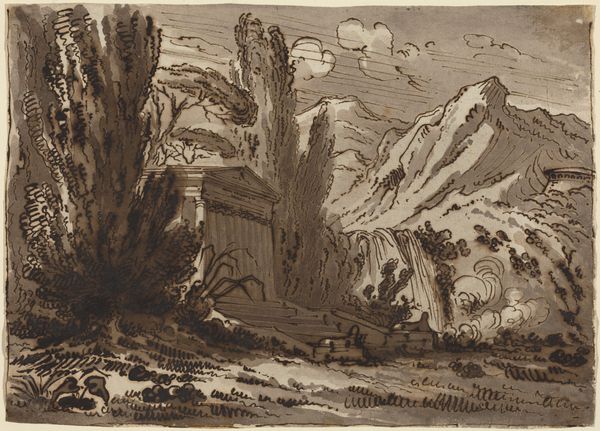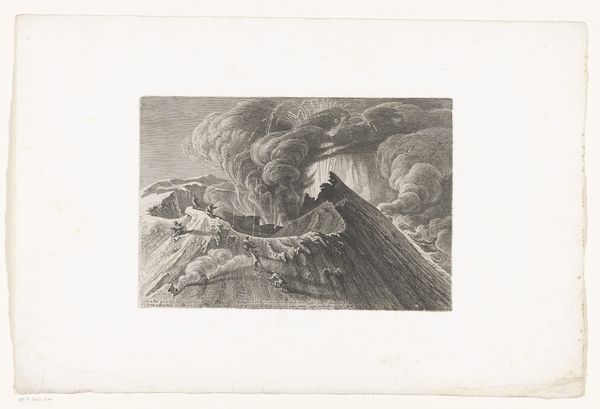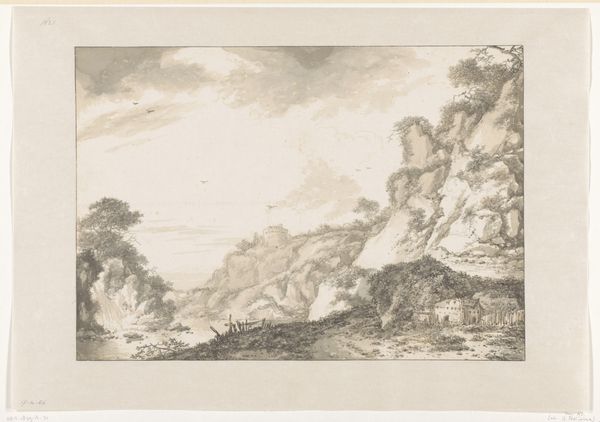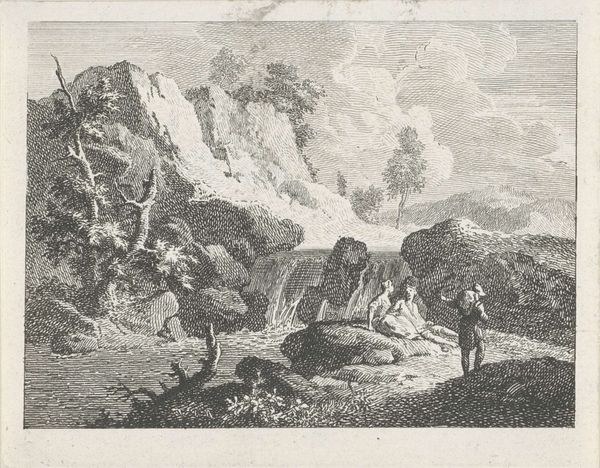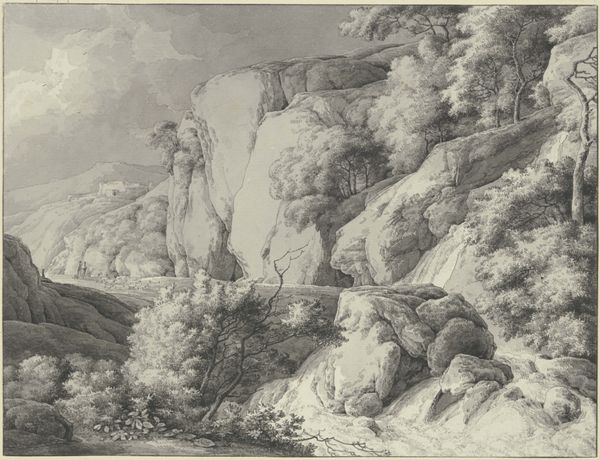
Dimensions: height 235 mm, width 373 mm
Copyright: Rijks Museum: Open Domain
Editor: This watercolour piece, "Binnenzijde van krater Etna," or "Inside the Crater of Mount Etna," created in 1778 by Willem Carel Dierkens, is striking. It's quite stark, the pale watercolour emphasizing the raw, almost violent geology. How do you interpret this work? Curator: A volcano is never just a volcano, is it? The iconography of fire, the symbolism of the earth's raw power… Dierkens’ Etna embodies sublime terror. Consider how the Enlightenment sought to classify and control nature. But Etna erupts, both literally and symbolically, defying that control. Editor: So, it's not just a landscape, it's a statement? Curator: Precisely! The billowing smoke – a visual stand-in for transformation and destruction – whispers of the cyclical nature of creation. Doesn't it also make you think about mortality, our smallness against such forces? Editor: Definitely! I never considered it that way, but seeing it as more than just a picture of a volcano adds a whole new level. Curator: Indeed. Artists of this era were fascinated with translating awe into visual form. What does the stark palette contribute to the symbolism, do you think? Editor: I suppose it emphasizes the drama, but also, maybe it’s about observation, a sort of scientific recording? Curator: Perhaps, yet even in recording, the symbolic power asserts itself. We still carry echoes of this perceived 'terror' today. The image functions as cultural memory, don't you think? Editor: I see what you mean! It bridges the 18th century with our contemporary understanding of both art and nature's power. Thank you!
Comments
No comments
Be the first to comment and join the conversation on the ultimate creative platform.
